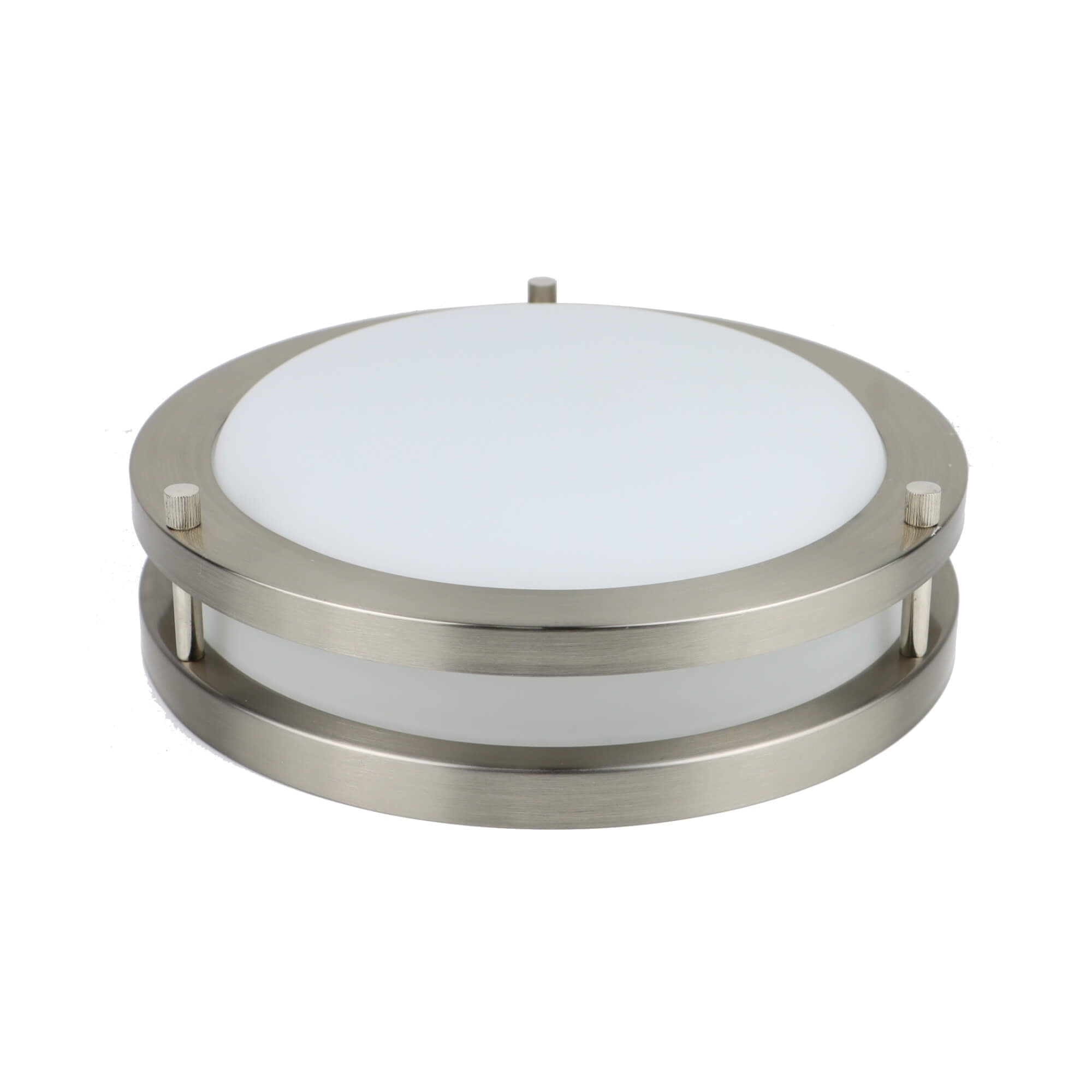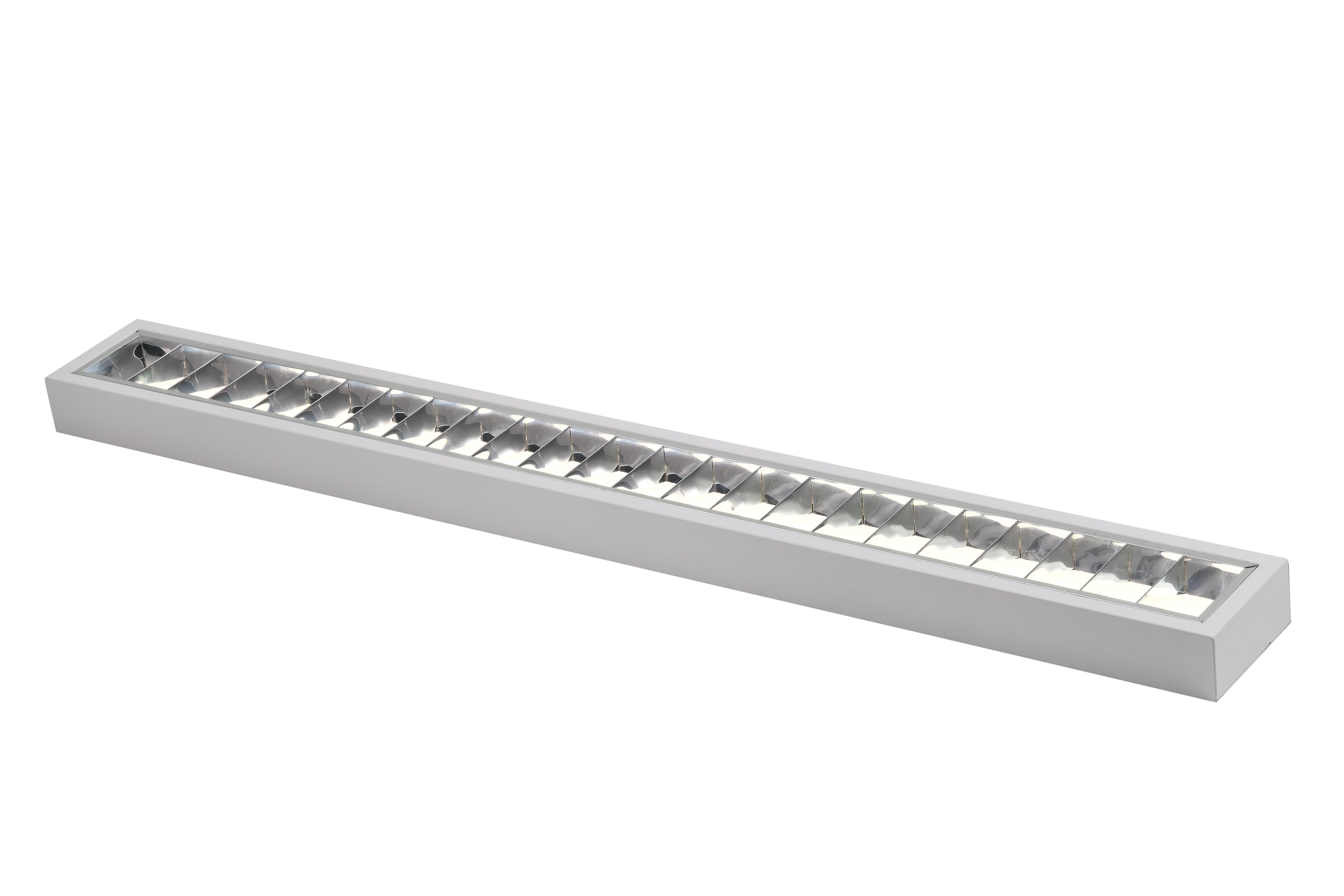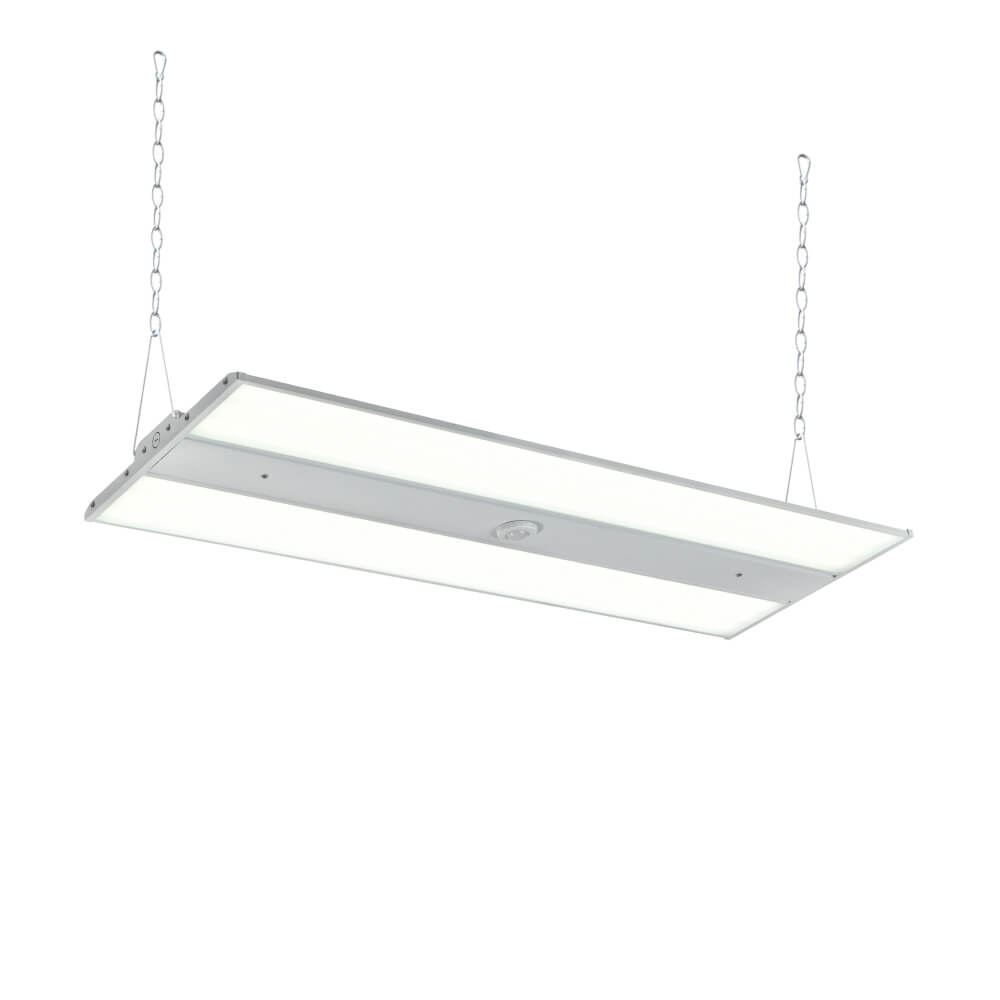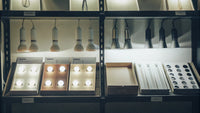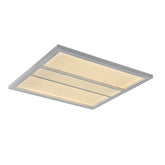The Essential Guide to LED Lights for Libraries with Tall Bookshelves
Libraries are sanctuaries of learning and imagination, going far beyond just being homes for books. The right lighting can transform these spaces by making every aisle and bookshelf feel welcoming and easy to navigate. This is where LED lights come into play-not only are they energy efficient and bright, but they also have the power to overhaul tall shelves and grand reading rooms. In this guide, we'll explore the top LED options tailored specifically for libraries, helping ensure your space feels as inspiring as the stories on its shelves.
Why LED Is the Premier Choice for Libraries
When it comes to picking the right lights for libraries, LEDs are often the top pick. Here's why:
- Energy Efficiency: LED lights consume less electricity than traditional bulbs while delivering the same brightness. This significant energy savings directly benefits a library's utility budget. Plus, the reduced power usage has a smaller ecological footprint, so LEDs are good for both your bottom line and the planet.
- Enhanced Longevity: LEDs last exceptionally longer than standard lighting solutions, meaning fewer replacements are needed. This perk is especially handy for libraries with tall, hard-to-reach bookshelves where changing bulbs can be challenging and disruptive. Less frequent maintenance not only minimizes this hassle but also lowers ongoing costs over time.
- Optimal Preservation: The LED's cooler, more gentle light helps prevent damage to sensitive materials like old books. Heat can accelerate the deterioration of paper and bindings, but LEDs generate less warmth, keeping items safely preserved for longer.
By selecting LEDs, libraries tap into major perks like energy savings, operational efficiency, and content protection. This smart, sustainable lighting choice effectively illuminates spaces while delivering bonus benefits.
How to Select the Perfect LED Fixtures for Tall Shelves
Strategic Fixture Selection
When assessing fixture types, consider flexibility. Track heads allow precision aiming to rake shelves with sharp visual clarity, avoiding title glare. Recessed troffers subtly wash open areas in uniform ambient light. Spotlights contain nimble directionality to crisply illuminate specific zones on demand. Combining adjustable fixture varieties enables both targeted book visibility and general wayfinding comfort.
Thoughtful Placement Strategies
Placement strategies also matter. Position adjustable heads to graze shelves from calculated angles, avoiding visitor eyestrain from harsh lighting angles while allowing them to read labels with ease. Mount overhead toplight tracks parallel to shelves, spacing conduits equidistantly for even wash. Place recessed troffers near aisles and stairwells, providing consistent ambient light to transition spaces. Spotlights shift wherever acute light is needed.
Power Level Considerations
Additionally, factor in power levels. Towering multi-tier shelves demands higher luminous output than shorter cases to sufficiently permeate collections without shadow gaps. Yet excessive luminance risks glare. Generally, larger libraries benefit from higher-capacity fixtures with intelligent controls, allowing granular light tuning per application. Smaller spaces may achieve suitable illumination from standard ambient and task lighting. In all cases, sample mock-ups during design ensure options match needs.
Emphasizing Adjustability
Finally, emphasize flexibility for future lighting shifts. Fixtures with adjustable outputs, angles, color temperature, and smart controls sustain highly adaptable systems. The library can transform soft reading nooks into vibrant community venues, redirect spotlighting as collections move, and create zones of calm study through warmer hues – all by calibrating lighting variably per activity instead of entire overhauls.
Understanding Color Rendering Index (CRI) in Library Lighting
The Color Rendering Index (CRI) plays an essential role in library lighting, where the accuracy of how colors are perceived is crucial for readability and the visual comfort of patrons.
What is CRI?
The concept of CRI is relatively straightforward-it rates a light's ability to show colors truthfully in comparison with natural light. The CRI scale runs from 0 to 100, with higher scores indicating that colors under the light will appear more similar to their appearance under natural daylight. For instance, under a light source with a CRI close to 100, you can expect the vibrant reds, deep blues, and lush greens of book covers and spines to be vivid and faithfully represented, maintaining their original tones and contrasts. This ensures that when patrons pull a book from the shelf, they see its colors just as the designer or artist intended.

Importance of CRI in Libraries
In libraries, where accurate color perception can enhance user experience, a high CRI is particularly significant. This is not only true for the general stacks but becomes even more critical in specialized sections. For example, in areas dedicated to art and design literature or children's books-where illustrations are key components of the reading material-a high CRI can make the visuals pop off the page, aiding in appreciation and understanding of the content.
Furthermore, lighting with a proper CRI can contribute greatly to eye comfort. In environments where individuals spend extended periods reading or studying, lighting with a high CRI can help minimize eye strain. This ensures that visitors can read for longer sessions comfortably without the fatigue that poor lighting might cause.
How Bright Should Our Reading Lights Be?
Bookshelf Areas: Subtle Lighting
When illuminating bookshelves, aim for soft, subtle lighting around 200 lux. This allows patrons to comfortably read titles without glare from excessive brightness overwhelming their eyes or the pages. Additionally, select light fixtures with lower lumen output levels to avoid emitting too much light, which could damage sensitive materials. The goal is sufficient yet gentle illumination.
Reading Areas: Tailored Brightness
In reading zones where focus is key, target approximately 500 lux through fixtures outputting 3,000-5,000 lumens. The specific lumens required depend on factors like ceiling height and wall colors. For individual spaces, 450-1,000 lumen desk lamps often work well. Incorporate adjustability features and dimming capabilities to customize lighting to patrons' needs and enhance their reading comfort. Consult lighting designers to artfully balance technical requirements with aesthetic preferences for an optimal environment.

All Areas: Consistent Distribution
Aim for even light distribution from area to area through a 0.60 uniformity ratio. Strategically place fixtures and select appropriate lumen levels to maintain relatively consistent brightness as patrons' eyes transition between sections. This continuity makes navigating and browsing throughout the library smooth and peaceful.
Minimal Glare
Also, minimize glare. A Unified Glare Rating (UGR) of 19 ensures adequate light for tasks while cutting glare through intentional fixture placement and anti-glare components. This blueprint for ample but non-disruptive illumination serves library visitors comfortably.
True and Vivid Colors
Finally, an 80+ Color Rendering Index (CRI) guarantees lifelike color accuracy, correctly displaying texts and surroundings, crucial for an immersive reading experience. Pair high CRI with quality lumens that illuminate properly to achieve this true-to-nature visual richness.
Careful interweaving of these elements creates warm, welcoming library lighting for discovery and reading-where every beam enhances the joy on each page turned.
Cost-Benefit Analysis of LED Lighting in Libraries
When deciding to upgrade your library's lighting to LEDs, it's important to weigh the initial costs against the long-term savings:
Initial Investment vs. Long-Term Benefits:
The upfront cost of LED lighting is typically higher than that of traditional incandescent or fluorescent bulbs. However, this initial investment is usually recouped over time due to LEDs' impressive energy efficiency. For example, an LED light might use 50% less electricity than a fluorescent tube for the same light output, leading to lower utility bills. Moreover, LEDs have a much longer lifespan-often lasting tens of thousands of hours before needing replacement. This durability means fewer disruptions from maintenance activities like ladder-climbing and bulb-changing, especially relevant in libraries with high shelving where replacing lights can be particularly troublesome.
Potential Rebates and Incentive Programs:
To further sweeten the deal, there's a variety of financial incentives available that can help mitigate the upfront costs of LED installations. Numerous government bodies and utility companies offer rebates for energy-efficient upgrades. For instance, a local government may provide a rebate that covers 20% of the cost for each LED fixture installed, while utility companies might offer a discount on energy rates for businesses that demonstrate significant energy savings. Additionally, specialized grant programs exist that focus on sustainability projects, which could fund the swap to LED lighting for public spaces like libraries.
As you consider the financial aspects of moving to LED lighting, remember that investing in LEDs is not just a cost-saving measure-it's an investment in your library's future. With LEDs, you'll create a brighter, more welcoming space that draws visitors in and encourages them to return. It's an opportunity to show your commitment to sustainability and fiscal responsibility. Stay tuned as we explore innovative trends in LED lighting that could further benefit your library.
How to Choose LED Lighting Vendors and Suppliers
Choosing the right supplier for your LED lighting is just as crucial as selecting the lights themselves. Here's how to make sure you pick a reliable partner for your library's lighting needs:
Criteria for Choosing the Right Vendor:
- Look for vendors with a wide selection of LED products, so you have plenty of options to choose from.
- Assess their customer service record. A vendor that offers strong support can be invaluable when you're installing a new system or if something goes wrong.
- Check for warranties or guarantees on products. This can give you peace of mind and save on future costs if replacements are needed.
Questions to Ask When Selecting Products:
- What's the lifespan of these LED lights?
- Can the color temperature and brightness be adjusted?
- Are the lights compatible with smart control systems?
- How does the vendor handle defective products?
- Is there a dedicated support team to assist with technical questions?
It's not just about the product-it's about the service that comes with it. A good vendor will guide you through the installation process, offer advice tailored to your specific needs, and provide ongoing support.
By carefully considering who you purchase your LEDs from, you ensure that your investment is protected and that your lighting system will serve your library well into the future. Your choice of a vendor is a partnership, one that should illuminate your path, not leave you in the dark. With the right supplier, your library's transition to LED lighting will be smooth and beneficial, casting your space in the best light possible.
How to Maintain Your Library's LED Lighting System
Though long-lasting, LED lighting systems do require ongoing care for peak efficiency over time. Establishing regular maintenance ensures your library stays brightly and comfortably illuminated for all visitors.
Ongoing Checkups
While LEDs are generally low maintenance, they still benefit from periodic inspections and care. Routinely check fixtures for any signs of wear, damage, or issues. Gently remove any dust or grime, which can gradually diminish brightness. Keeping the lighting clean helps sustain the ideal illumination for reading and browsing.
Prompt Issue Resolution
Don't ignore minor problems as they could worsen over time. Flickering lights or outages should be addressed immediately before impacting wider areas. Stock some extra LED bulbs so individual burnouts can be swiftly replaced, maintaining consistent and seamless quality.
Monitoring Performance
Also monitor system performance by tracking electricity usage-this confirms your LED lighting continues providing expected energy savings. Occasionally check light levels and color temperature remain optimized for the spaces. As needed, make ambient tweaks to sustain the comfortable atmosphere as environmental factors shift.In fact, such advantages extend beyond libraries; even school rooms can benefit immensely. LED classroom lighting can unlock academic success with brighter spaces.
Staying Current on Advances
Additionally, stay updated on the latest LED innovations for even more efficiency and functionality. Newer LED models or smart controls could enable upgrades that increase energy savings, enhance lighting quality, and simplify system management.
Equipping Staff
Ensure some staff members understand basic troubleshooting and who to contact for lighting repairs. A quick primer on your system's operation, settings, and LED benefits empowers them to handle minor issues and properly communicate lighting needs.
By integrating regular care and training with timely problem-solving, your customized LED lighting system will reliably illuminate library spaces for years on end-sustaining a welcoming haven for discovery.
Take the Lead with LEDs: Transform Your Library's Lighting
Embracing LED lighting is a wise choice for libraries, offering a beacon of benefits like energy savings, durability, and preservation-friendly conditions. As we've explored, selecting the right LEDs involves more than just picking bulbs; it's about considering fixture types, color accuracy, and vendor reliability to create an inviting atmosphere for reading and discovery. Once installed, routine maintenance and staying abreast of technological advances are key to ensuring your library's lights continue to shine efficiently. In essence, integrating and caring for LED lights in your library not only brightens spaces but also supports an eco-conscious and cost-effective future, fostering a welcoming environment where knowledge seekers can thrive.
